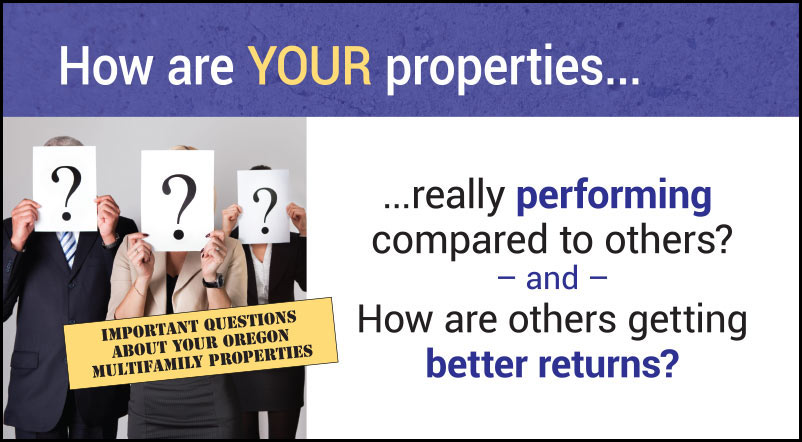
Property Performance: What You Don’t Know Can Hurt You
We’re experts in multifamily investments. We know what makes the difference between properties that make their owners top dollar and those that don’t. And frankly, you can’t afford not to know.
Read or Click to Listen
Today, we’re talking with René Nelson, CCIM, a well known multi-family expert and commercial real estate broker about commercial real estate in Eugene. This special series focuses on issues related to multi-family properties that many investors aren’t as familiar with as they should be.
René, what is the most important measurement of your properties performance?
René: Well, Patrick, we look at several things that go into this measurement including market rent and operating expenses; but, hands down, one of the most important measurements is net operating income. Here’s why: rent can vary all over the board. It can lean on age of the property, location, condition of the property, and operating expenses can vary all over the board. Some people self-manage and other people use a professional management company. That right there can make a difference between, say, five to eight percent of your overall operating expense.
There are also some factors like vacancy and credit loss that can weigh in. Net operating income is the most important measurement to gauge how effective your passive real estate is working for you.
What should a property’s occupancy rate be?
René: Well, appraisers and lenders use an industry standard of five percent for a vacancy factor. Most investors will typically apply their own formula. If nothing is reported, or if I have a client that’s looking at a property and the owner is a little vague on what is vacancy has been, and my investor is trying to look at the property to decide if he wants to buy, typically, what we’ll do is we’ll get a rent roll and we apply whatever vacancy factor my client is comfortable with. Often in aggressive markets, we’ll see it be as low as three percent, like in a campus area. All the way up to 10% for rougher properties where it’s a value-add situation or a really rough neighborhood, less than desirable.
But, part of that fact that rules into that is slow performance in preparing properties to have them go back out on the market. If a tenant moves out and it takes your property manager, say, two weeks to turn that unit and get it ready to put it back on the market, and then another two weeks to fill it with a good tenant, you’ve just experienced a four percent vacancy factor because every week of vacancy equals two percent per annum for a vacancy factor.
The faster you can turn around a unit, obviously, the less vacancy you’ll experience. There’s really no exact number due to all the variables, but I would say that the industry standard is really three to five percent for the vacancy factor and your occupancy. You’re ultimately shooting for 100% occupancy, but you do have some of those turnover issues that you have to contend with.
Thank you, René. Now our listeners know what’s new with commercial real estate in Eugene right now. If you need more information go to Eugene-commercial.com or call René at (541)687-5871.

Recent Comments